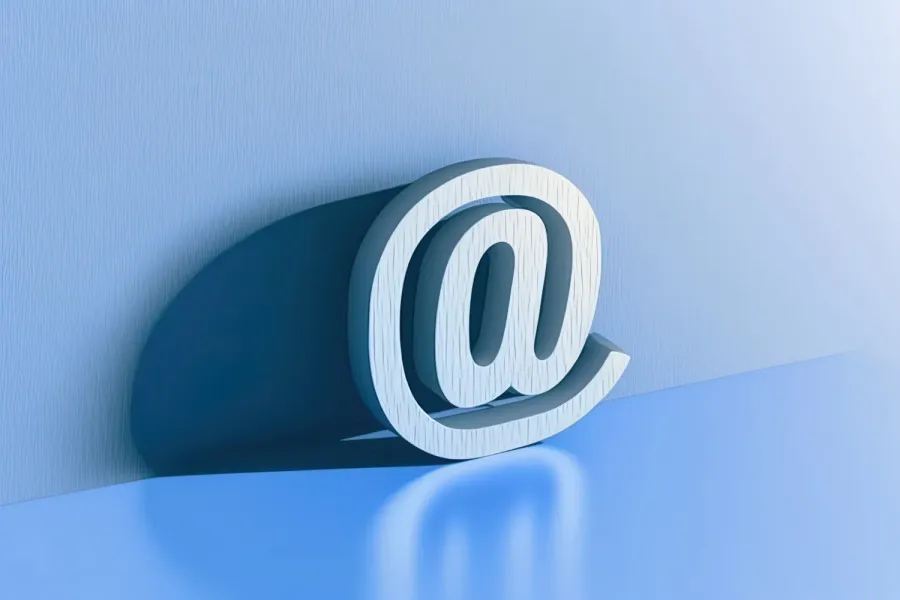
Email aliases are becoming more important in how we manage electronic communication. Understanding and using email aliases can significantly enhance how you handle email management, both for personal or business use.
This article will guide you through everything related to email aliases, including how to create and use them effectively on email platforms like Gmail, Outlook, Apple Mail, and Superhuman. (Superhuman makes email aliases especially easy to use, allowing you to manage multiple email accounts in one place.)
Prepare to streamline your inbox, protect your personal information, and optimize your email interactions using email aliases.
What is an email alias?
An email alias is a forwarding address that directs messages to another email account, typically your primary email address.
Email aliases offer a way to keep your real email address hidden, protecting you from spam and security risks, enhancing privacy, and streamlining your inbox management.
What are the benefits of using an email alias?
Using an email alias offers significant benefits. Most importantly, it enhances both privacy and organizational efficiency.
By creating an alias, you can keep your primary email address confidential. This privacy barrier can be crucial in preventing widespread exposure and potential spam, and in protecting against phishing attempts that target exposed email addresses.
An alias also simplifies email management, allowing you to segregate different types of communication, such as subscriptions or business inquiries, without cluttering your main inbox. This separation aids in better organization and quicker response times, making it easier to maintain focus and manage tasks efficiently. You can automatically sort emails from various aliases into dedicated folders. This simplifies organization and response efforts.
Aliases can also create a professional appearance for your business communications. Thus presenting a unified brand image while handling diverse aspects of your operations. An alias like contact@yourdomain.com boosts offers a professional, more targeted point of contact.
For marketing purposes, using distinct aliases for each campaign aids in precise response tracking.
What are some examples of email aliases?
Now that you have a better understanding of what an email alias is, let’s take a look at some common examples of aliases.
Role-based aliases
The following are some examples of role-based email aliases:
- support@yourcompany.com
- sales@yourcompany.com
- marketing@yourcompany.com
- careers@yourcompany.com
These aliases can come in handy for specific departments or roles, and may help you separate various forms of inquiries or feedback.
Location-based aliases
Location-based aliases can be beneficial for businesses with multiple locations. For example:
- newyork@yourcompany.com
- london@yourcompany.com
- tokyo@yourcompany.com
Newsletter or campaign aliases
Newsletter or campaign aliases can be created for specific uses. For example:
- newsletter@yourcompany.com
- promotions@yourcompany.com
- productlaunch@yourcompany.com
Functional aliases
Some email aliases are based on certain functions or actions. For example:
- noreply@yourcompany.com
- invoices@yourcompany.com
- feedback@yourcompany.com
How to create an email alias
Here’s a walkthrough of how to create an email alias on some of the most popular platforms.
Gmail
Creating an email alias in Gmail enhances your email management and privacy.
Start by logging into your Gmail account and navigating to the settings menu.
Under the "Accounts and Import" tab, find the section labeled "Send mail as," and click "Add another email address." Here, you can input the new alias you wish to create.
For a quick alias, add a plus sign (+) followed by a keyword related to its purpose directly before "@gmail.com" in your email address.
For example, if your primary email address is john.doe@gmail.com, you can create an alias for online shopping by appending "+shopping" before the "@gmail.com" part.
The alias will then look like this: john.doe+shopping@gmail.com
This method allows you to filter messages easily and identify different sources of incoming mail.
After setting up an alias, you'll want to adjust the settings in Google Workspace to manage how you send and receive email from this new alias.
You can specify whether replies to emails from the alias go to the alias address or your primary Gmail address. This is particularly useful if you use the alias for specific roles or projects. It helps keep your various communications organized and accessible.
Integrating these aliases into your daily operations will streamline communication channels, maintain better organization, and enhance the security of your email interaction, all while keeping your primary email address private from public exposure.
Outlook
To create an email alias in Microsoft Outlook, follow these clear, simple steps:
- Access the Outlook Admin Center: Log in with your admin credentials. Navigate to the "Users" section and select the account you wish to manage.
- Add a new alias: Find the email settings and choose "Manage email aliases."
Here, you can enter the new alias you wish to add.
For example, if your primary email is john.doe@outlook.com, you could add an alias like john.sales@outlook.com for sales-related communications. - Save changes: After adding the new alias, save the changes.
This alias will now direct email to the same inbox as your primary account but allows for better sorting and managing incoming messages.
You can easily manage and add multiple aliases to your account using Outlook's Windows admin center.
It enhances organizational capabilities without needing separate email accounts for different roles or purposes.
This method is particularly useful in a business setting where different departments might need distinct email addresses linked to the same person's primary account.
Apple Mail
Creating an email alias in Apple Mail is a straightforward process. It can improve your email management. It is especially good if you're handling multiple roles from a single email account and need to use an alternate email.
Here’s how to set up an alias in Apple Mail for services like iCloud:
- Open Apple Mail Settings: Start by opening the Apple Mail application on your device. Navigate to the "Preferences" section, and then to the "Accounts" tab.
- Choose your account: Select the email account you want to create an alias for. This is typically your iCloud account, but can be any account that supports aliases.
- Add an email alias: There should be an option to manage email addresses or aliases. Click on "Edit," then "Add Alias." Here, you can choose the alias you want. For instance, if your primary email is jane.appleseed@icloud.com, you might add an alias like jane.queries@icloud.com to handle inquiries specifically.
- Complete setup: After adding the alias, confirm the details and save your settings. This alias will direct email to your main inbox, allowing you to filter and respond to emails more efficiently.
Apple Mail users can create multiple aliases to split different types of interactions. For example, personal, business, or temporary communications, all from a single email account.
This function proves incredibly useful for improving overall email organization. It guarantees that personal and professional communications are appropriately sorted.
How to integrate email aliases with other apps
Integrating temporary email addresses across various applications and platforms enhances your productivity. Doing this serves different purposes.
Overall, it maintains consistency in your communication strategy.
When you use email aliases, you can align your email interactions with the specific functions of different apps. This ensures that your communication is not only efficient but also well-organized.
An email productivity platform like Superhuman makes managing multiple email accounts and integrating with other apps even easier, allowing teams to save hours every week.
Seamless synchronization across devices
Ensure that your email aliases are set up to sync across all devices.
This will allow you to access your email from any device without missing out on important communications. Whether on a desktop at work or using a mobile device during your commute.
Integration with professional tools
Many professional environments use tools like Slack, Asana, or Trello. You can link your email aliases with these platforms to receive notifications directly related to your tasks.
For example, an alias used specifically for project updates can be integrated with your project management tools to streamline updates and feedback.
Enhance customer interaction
If you're using customer relationship management (CRM) software, integrating your email aliases can help tailor your customer interactions more effectively.
For instance, having a dedicated alias for customer feedback or support ensures that the appropriate tools and teams prioritize and handle these communications.
Automate and filter email
By using additional email addresses in combination with rules and filters available in most email services like Gmail or Outlook, you can automate where your emails are stored.
This setup means email sent to a specific alias can be automatically directed to a designated folder. This makes them easier to manage and respond to.
Ensure compatibility and security
When integrating aliases, verify they are compatible with your operating systems. Check with iOS, Windows, or Android.
Also, ensure that your aliases are secure by using strong authentication methods to protect against unauthorized access, thereby safeguarding sensitive information.
By leveraging the functionality of email aliases in conjunction with other apps and tools, you can significantly enhance your operational efficiency. And maintain better control over your communications.
The bottom line
Email aliases are invaluable for enhancing both productivity and security. They allow you to manage email interactions more precisely and protect your primary email account from spam and phishing.
With email aliases you can compartmentalize and streamline your digital communication, making it easier to focus on what’s important.
For those who face the demands of sales, customer service, or large-scale email operations, Superhuman is the fastest email experience ever made. Try Superhuman today to see how it can transform your email management for sales, customer service, and large-scale email operations.

